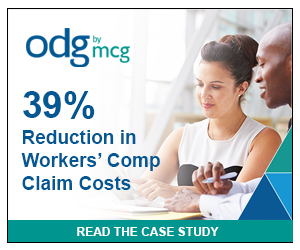Duff: The 'Entrepreneurial Opportunity' Canard
Tuesday, January 29, 2019 | 0
The world of workers' compensation is always well-served to keep abreast of labor and employment law developments outside of its ordinary confines.

Michael C. Duff
One of the most essential threshold questions in all of labor and employment law is who qualifies as an "employee." From Dynamex to state "gig" laws to various areas of federal law, the question will not evaporate anytime soon.
It is axiomatic that one of the easiest ways to reduce labor costs is not to employ "employees." And just as there may be "50 Ways to Leave Your Lover," there may be an equal number of ways not to employ employees.
Here I'm cross-posting an excellent blog analysis over on our sister Workplace Law Prof blog authored by my friend, colleague and labor law casebook co-author Jeff Hirsch, professor and associate dean at University of North Carolina School of Law -UNC Chapel Hill. From the post:
Yesterday, the NLRB issued a decision in the SuperShuttle DFW case, providing yet another analysis to determine whether an individual is an employee or independent contractor under the NLRA. The board's new approach is basically just to adopt the D.C. Circuit's test from the 2011 FedEx case, which I've examined (and criticized) eleswhere. That test relies most heavily on whether the worker has "entrepreneurial opportunity."
As a preliminary matter, it is important to remember that the Supreme Court has held multiple times that when a statute lacks a meaningful definition of "employee," the common-law "right-to-control" test for determining whether someone is an employee or independent contractor should apply. The court, in Roadway Systems, explicitly held that the NLRA is one of those statutes. So the question for the NLRB is to determine what the common-law test requires.
Note that the analysis is not referred to as the "common-law 'entrepreneurial opportunity'" test. That's because, for its long history, that test has stressed that the most important factor is the purported employer's right to control the manner and means of work of the purported employees.
Entrepreneurial opportunity may be relevant, along with numerous other factors, but the right to control is the focal point of the test (I'm actually being generous here because entrepreneurial opportunity isn't explicitly a factor in the common-law test, although other factors hint at a similar concern).
In fact, in an ironic twist, the D.C. Circuit just last month stressed this exact point with regard to the NLRB's joint-employer test. In that case, the D.C. Circuit gave a pretty strong warning that the board needs to be careful not to stray too far from the common law's focus on right-to-control.
Despite all of this, in SuperShuttle, the NLRB adopted a D.C. Circuit test that makes entrepreneurial opportunity the overriding concern in the analysis. The NLRB downplayed that that's what the D.C. Circuit did, but that interpretation is just wrong.
The court held, among other things, that it was "shift[ing the] emphasis’ away from the unwieldy control inquiry in favor of a more accurate proxy: whether the ‘putative independent contractors have significant entrepreneurial opportunity for gain or loss.’" And that shift, to my mind, is indefensible.
Michael C. Duff is associate dean for student programs and external relations, and is professor of law, at the University of Wyoming College of Law. This entry is republished from the Workers' Compensation Law Professors blog, with permission.



Comments